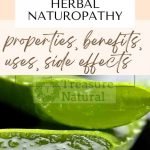Calendula officinalis oil : a natural supplement for the well-being of the skin. Properties of officinal calendula oil and advice on use.

The marigold ( Calendula officinalis ) belongs to the Composite family. The beneficial properties of calendula officinalis can be exploited through the use of:
- essential oil of calendula
- calendula oleolyte
- mother tincture of calendula
- marigold macerates
- herbal teas based on calendula
- direct ingestion of calendula
Already, not everyone knows that calendula is edible and grows spontaneously far and wide throughout the Italian peninsula.
The calendula of the fields, in reality, is not the ” officinalis” species, that is the one cultivated above all for ornamental purposes, but it is the Calendula arvensis species which is equally rich in active ingredients useful for our organism but which however produces smaller flowers and therefore less appreciated.
Calendula officinalis oil, properties
Calendula oil is rich in antioxidants and vitamin A, it is to these constituents that we owe the soothing and healing properties. The calendula contains triterpenes, flavonoids, polysaccharides, carotenes, phytosterols, salicylic acid and mucilage. Thanks to these active ingredients, calendula is considered a real cure-all for health. It is very popular in the female world for its antispasmodic properties useful in case of menstrual pain.
Thanks to the abundant presence of mucilage, it exerts a soothing action on the internal and external mucous membranes (which is why there are many genital creams based on calendula). For internal use, calendula is recommended in case of colitis, gastritis or to prevent ulcers and other disorders of the gastrointestinal system.
Calendula officinalis oil and atopic dermatitis
Calendula officinalis oil has strong anti-inflammatory properties and is therefore also recommended for eczema and atopic dermatitis. The active ingredients contained in the officinal calendula oil “extinguish” skin irritations.
Applied to the skin, calendula oil has an antiseptic, healing, refreshing (useful in case of atopic dermatitis that causes itching), emollient and dermopathic action. Due to the same properties, this oil is an excellent natural remedy even in case of skin irritation, redness or superficial wounds.
Homemade calendula oil
Unlike mother tinctures that involve the use of solvents, calendula oil is produced starting from a completely natural process. An infusion during which the flowers, still closed in buds, release all the active ingredients in another vegetable oil.
This is why when we talk about calendula oil it would be more appropriate to use the definition “calendula infusion oil“.
To make calendula oil at home, the production is carried out using a period of maceration of the flowers, in vegetable oil, of 40 days. In the industrial field, together with maceration, in order to better extract the active ingredients contained in the plant cells of the calendula, an additional mechanical stress is carried out. For this reason, the product we find on the market sees more appreciable concentrations of active ingredients.
Where to buy calendula oil?
In herbal medicine or taking advantage of online shopping.
Those who prefer homemade marigold oil can leave 100 grams of dried marigold flowers in half a liter of sweet almond oil to soak. Sweet almond oil easily penetrates the skin, exerting an emollient and moisturizing action, so as to assist the action of calendula.






